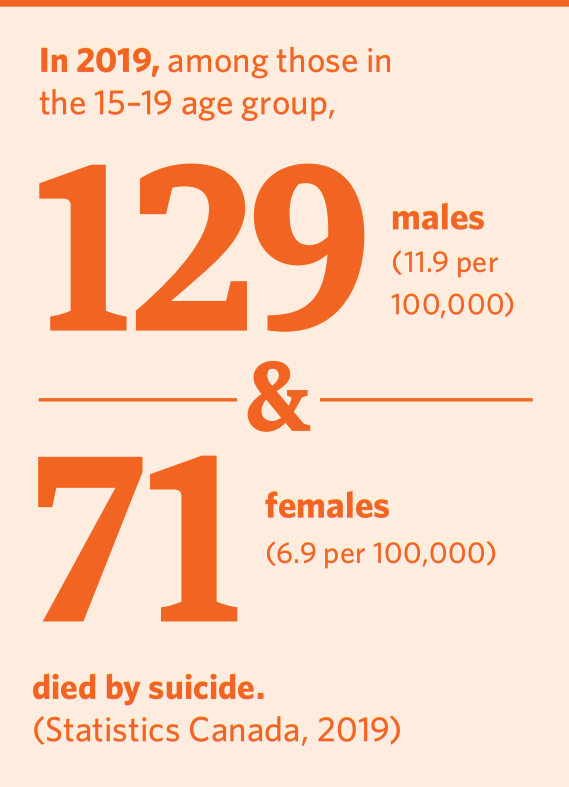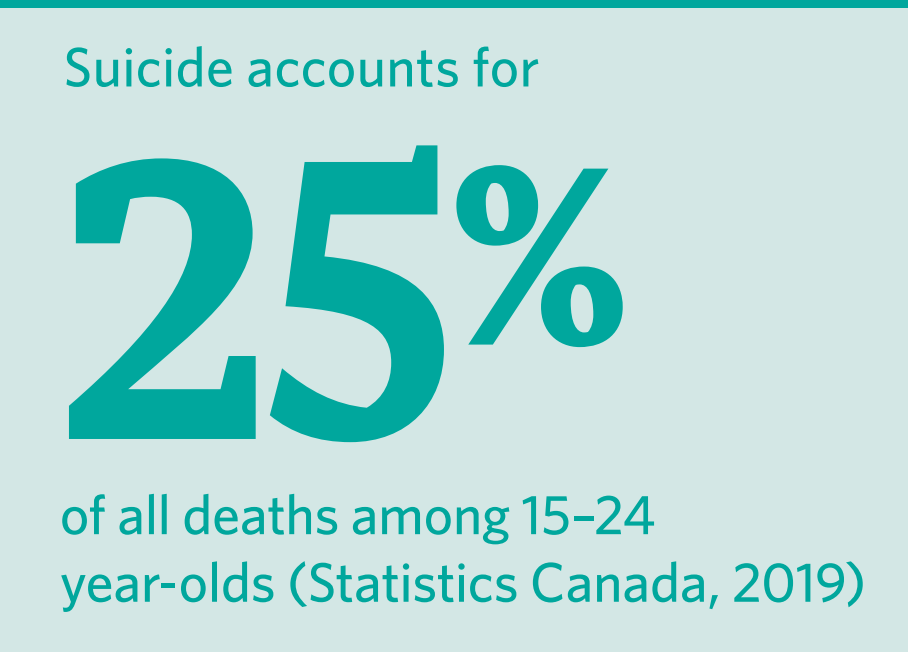If you are in distress, you can call or text 988 at any time. If it is an emergency, call 9-1-1 or go to your local emergency department.
- Fact sheets, Public Resources
Youth and Suicide Fact Sheet
This resource was published in 2022. The data may be out of date. Young people face significant internal and external stressors, including social, physiological, and neurological change. Being an adolescent can involve many challenges. When facing them, some may feel trapped and need support to help them see hope for the future. Thoughts of suicide or suicide attempts are key warning signs. If young people show these signs, it is crucial to offer support and connect them to help as soon as possible (Bennett et al., 2015). Why are youth at risk? A few factors put youth at risk of suicide: Warning signs What can reduce risk?
Certain factors can place some people at a higher risk for suicide than others, and when multiple risk factors outweigh the factors that build resiliency, there is an increased likelihood that a person may think about suicide (Sharam et al., 2021).
Any significant change in behaviour or mood is a warning sign that someone may be thinking about suicide. In the following examples among young people, some characteristic behaviours may be symptoms of an emerging mental health concern, including thoughts of suicide:

Suicide risk in youth can be reduced in four basic ways: reducing psychological pain, increasing hope, enhancing connection, and reducing the capability for suicide (Klonksy, personal communication, 2020).
- Fact sheets, Public Resources
Youth and Suicide Fact Sheet
Youth and Suicide Fact Sheet
- Children and Youth, Suicide Prevention
This resource was published in 2022. The data may be out of date. Young people face significant internal and external stressors, including social, physiological, and neurological change. Being an adolescent can involve many challenges. When facing them, some may feel trapped and need support to help them see hope for the future. Thoughts of suicide or suicide attempts are key warning signs. If young people show these signs, it is crucial to offer support and connect them to help as soon as possible (Bennett et al., 2015). Why are youth at risk? A few factors put youth at risk of suicide: Warning signs What can reduce risk?
Certain factors can place some people at a higher risk for suicide than others, and when multiple risk factors outweigh the factors that build resiliency, there is an increased likelihood that a person may think about suicide (Sharam et al., 2021).
Any significant change in behaviour or mood is a warning sign that someone may be thinking about suicide. In the following examples among young people, some characteristic behaviours may be symptoms of an emerging mental health concern, including thoughts of suicide:

Suicide risk in youth can be reduced in four basic ways: reducing psychological pain, increasing hope, enhancing connection, and reducing the capability for suicide (Klonksy, personal communication, 2020).
SHARE THIS PAGE
RELATED

Review our Assessment Framework for Mental Health Apps — a national framework containing key standards for safe, quality, and effective mental health apps in Canada.

To help expand the use of e-mental health services, we developed four online learning modules based on our Toolkit for E-Mental Health Implementation, in collaboration with the Centre for Addiction and Mental Health (CAMH).

Stepped Care 2.0© (SC2.0) is a transformative model for organizing and delivering evidence-informed mental health and substance use services.

